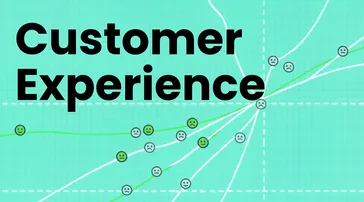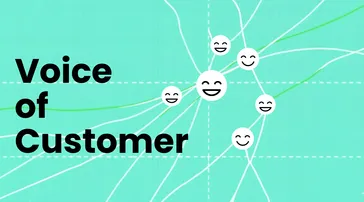7 min read
Listen and understand your customers. Win them at any stage of their journey.
cx Platform
Customer retention is critical to building a sustainable business. Studies show that acquiring new customers costs five times more than retaining existing ones, and a 5% increase in retention can boost profits by up to 95%. But how do you know if your retention strategies are working? By tracking specific customer retention metrics, you can gain valuable insights into your customer experience, improve your offerings, and grow your bottom line.
In this post, we’ll explore six key customer retention metrics every business should track and explain how to measure them effectively.
Check out our Customer Retention Strategies for 2026 now!
What Are Customer Retention Metrics?
Customer retention metrics are quantitative measures that help businesses track how well they are keeping their customers over time. These metrics provide insights into customer loyalty, satisfaction, and the likelihood of continued engagement with your product or service. Retention metrics are used to assess various aspects of the customer journey, from the frequency of repeat purchases to how long customers stay with your brand. By analyzing these metrics, businesses can identify patterns, understand customer behavior, and make data-driven decisions to improve retention strategies.
Why Are Customer Retention Metrics Important?
Customer retention metrics are crucial because they directly impact a company’s profitability and long-term success. Keeping existing customers is significantly more cost-effective than acquiring new ones, as loyal customers tend to spend more and recommend your brand to others. These metrics provide valuable insights into customer satisfaction and areas where your business can improve. By focusing on retention, businesses can build stronger customer relationships, reduce churn, and increase Customer Lifetime Value (CLV). Ultimately, retention metrics offer a clear view of how well a company is maintaining its customer base, which is vital for sustainable growth and a competitive edge in the market.
Customer Retention Metrics Overview
| Metric | What It Measures | Best For |
|---|---|---|
| CRR | % of customers retained over time | Overall retention health |
| Churn Rate | % of customers lost | Identifying retention problems |
| CLV | Total revenue per customer lifetime | Investment decisions |
| RPR | % of customers who repurchase | Loyalty measurement |
| NPS | Likelihood to recommend | Brand advocacy |
| CSAT | Satisfaction with specific interactions | Service quality |
- Customer Retention Rate (CRR)
- Churn Rate
- Customer Lifetime Value (CLV)
- Repeat Purchase Rate (RPR)
- Net Promoter Score (NPS)
- Customer Satisfaction Score (CSAT)
1. Customer Retention Rate (CRR)
What is it?Customer Retention Rate (CRR) measures the percentage of customers who continue to do business with you over a certain period of time. It’s a direct indicator of customer loyalty and the effectiveness of your retention strategies.
How to calculate it? Use this simple formula:
CRR = [(Number of customers at the end of a period - Number of new customers) / Number of customers at the start of the period] x 100
For example, if you started the month with 100 customers, gained 20 new ones, and ended the month with 110, your CRR would be:
CRR = [(110 - 20) / 100] x 100 = 90%
A higher retention rate indicates that you are successfully keeping your customers engaged and satisfied.
2. Churn Rate
What is it?Churn Rate is the inverse of Customer Retention Rate, measuring the percentage of customers who stop doing business with you during a given period. Monitoring churn helps you understand why customers are leaving and how you can prevent it.
How to calculate it? The formula for churn rate is:
Churn Rate = (Number of customers lost during a period / Number of customers at the start of the period) x 100
For example, if you lost 10 customers out of 100 over the course of a month, your churn rate would be:
Churn Rate = (10 / 100) x 100 = 10%
A lower churn rate means more customers are sticking around, which is vital for long-term growth.
3. Customer Lifetime Value (CLV)
What is it?Customer Lifetime Value (CLV) estimates the total revenue you can expect from a customer throughout their entire relationship with your company. Understanding CLV helps you gauge how much you can invest in acquiring and retaining each customer.
How to calculate it? To calculate CLV, use this formula:
CLV = Average Purchase Value x Average Purchase Frequency x Customer Lifespan
For example, if a customer spends $50 per purchase, buys three times a year, and stays with your business for five years, their CLV would be:
CLV = 50 x 3 x 5 = $750
The higher the CLV, the more valuable each customer is to your business, making customer retention strategies even more critical.
4. Repeat Purchase Rate (RPR)
What is it?Repeat Purchase Rate (RPR) measures the percentage of customers who make more than one purchase. It’s a vital indicator of customer satisfaction and loyalty.
How to calculate it? Here’s the formula:
RPR = (Number of returning customers / Total number of customers) x 100
For example, if 40 out of 100 customers made repeat purchases in a given period, your RPR would be:
RPR = (40 / 100) x 100 = 40%
A higher RPR indicates that more customers are returning for additional purchases, showing that they value your product or service.
5. Net Promoter Score (NPS)
What is it?Net Promoter Score (NPS) is a metric used to gauge customer satisfaction and loyalty by asking one simple question: “How likely are you to recommend our product or service to a friend or colleague?” Customers respond on a scale of 0 to 10, and the results are divided into three categories:
Promoters (score 9-10): Loyal customers who will recommend your brand.
Passives (score 7-8): Satisfied but not enthusiastic customers.
Detractors (score 0-6): Unhappy customers who may leave or spread negative reviews.
How to calculate it? The NPS formula is:
NPS = % of Promoters - % of Detractors
For example, if 60% of your respondents are Promoters and 20% are Detractors, your NPS would be:
NPS = 60% - 20% = 40
A higher NPS indicates a strong likelihood of word-of-mouth referrals and overall customer satisfaction.
Learn more about 5 Strategies to improve customer retention with NPS surveys
6. Customer Satisfaction Score (CSAT)
What is it?Customer Satisfaction Score (CSAT) measures how satisfied customers are with a specific interaction, product, or service. CSAT surveys typically ask customers to rate their satisfaction on a scale from 1 (very dissatisfied) to 5 (very satisfied).
How to calculate it? To calculate the CSAT, use this formula:
CSAT = (Number of satisfied customers / Total number of responses) x 100
For example, if 80 out of 100 customers rate their experience as satisfied or very satisfied, your CSAT would be:
CSAT = (80 / 100) x 100 = 80%
A high CSAT means your customers are happy with their experience, while a low CSAT points to areas needing improvement.
How to Track Customer Retention Metrics with Responsly
Collecting the data needed to calculate these customer retention metrics requires a systematic approach to customer feedback. Responsly’s Customer Experience platform makes it easy to measure all these metrics in one place:
Automated NPS & CSAT surveys: Trigger NPS surveys and CSAT surveys at key touchpoints to continuously track customer sentiment.
Omnichannel distribution: Reach customers via email, SMS, WhatsApp, or website surveys to maximize response rates.
Real-time analytics: Monitor trends in your retention metrics with built-in dashboards and identify at-risk customers before they churn.
Pre-built templates: Get started quickly with our customer experience templates designed specifically for measuring retention metrics.
By combining operational data with direct customer feedback, you can understand not just what is happening with your retention, but why - and take action to improve.
Conclusion
Tracking these six customer retention metrics—Customer Retention Rate, Churn Rate, Customer Lifetime Value, Repeat Purchase Rate, Net Promoter Score, and Customer Satisfaction Score—will give you a comprehensive view of how well you’re keeping your customers engaged and loyal. By understanding and improving these key metrics, you can enhance customer experience, reduce churn, and ultimately boost long-term business growth.
For more strategies on keeping your customers, explore our guide to customer loyalty software and learn about customer service metrics that complement your retention tracking.
Make sure you regularly review and act upon these insights to stay ahead of customer expectations and maintain a competitive edge. Start collecting feedback today to improve your customer retention metrics.





